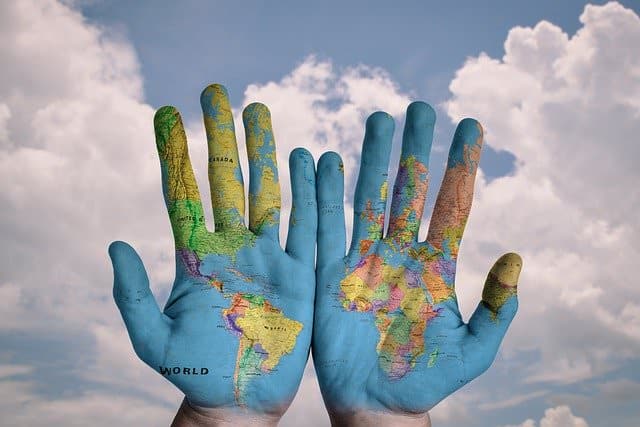Introduction
Within geography, there are two branches, physical geography and human geography. Human geography is connected to how people relate to their built environment. Built environment is a man made environment, mostly referring to cities and the amenities used within cities. The ways in which people live and function in their cities, and the meanings human beings associate with their cities are studied in detail within the cohort of human geography.
Human Geography includes the differences between different nations and countries, the differences in cultures and everyday living, language differences, economic and sociological developments within each country, settlement patterns within cities, villages and whole nations, and the entire urban framework within the geographical areas. Studying all these types of notions within geographies are a part of human geography.
Cultural Geography within Human Geography
Cultural geography is a part of Human Geography. Most popular cultural geography areas include South Asian and East Asian Studies which includes the different cultural norms within Asia and how it influences people’s lives on a daily basis. There are also African and European Studies within Human Geography which looks at those cultural values and beliefs in detail.
Cultural geographers study different types of countries and continents within the world to analyse and understand how people’s location can make an impact on their language, governance and policy issues, religion, gender and many other cultural norms humans are generally affected. Gender and sexuality, Children’s roles in societies and how they impact the general culture of a nation or continent are all areas which cultural geographers study in detail. This type of geography is very related to Human Anthropology, Social Psychology and Sociology which are interdisciplinary and the theories within these subjects are usually inter-lapped.

Developmental Geography within Human Geography
Developmental Geography is very related to Cultural Geography. Developmental Geography tries to analyse more data and numbers in quantitative research methods rather than qualitative analysis. Developmental Geography looks at notions such as population growth, population trends, economic and socio-demographic disparities which usually impact the standard of living and quality of life of humans. Family based issues and spatial organisation of people are also looked at in Developmental Geography.
Sustainable Development is a big part of developmental geography, although it overlaps with economics. In the past decade, the SDG Goals that were formed by the United Nations, forms the basis of developmental geography. The ways in which people continue to live their lives based on the governmental policies and actions, are an important part of SDG Goals. For instance, SDG goals tries to reduce poverty and unemployment rates, increase quality of life,and improve amenities found within cities, which are all an essential part for Developmental Geography. Physical locations and navigation within cities are also a part of Developmental Geography.
Urban Geography within Human Geography
People who study Urban Geography are usually known as Urbanists. Urban life and built environment are common terms used in Urban Geography.
Urban Geography is the study of human behaviour within cities, regions, towns, villages and other dense settlement areas. Urban Geography, similar to Developmental Geography, looks as demographic groups and studies how people settle in their habitats. There are a lot of overlaps between Urban Geography and other types of Human Geographies such as population geography, economic geography, and settlement geography.
Some scholars refer to all these types of Human Geographies as Urban Geography, because it is the more widely used term for relationships between human beings and their settlements. Urban renewal, Urban governance, Public Spaces, Housing, Industrialization, Transport and other socio-spatial inclusions of everyday lives are a part of Urban Geography. Histories and mapping of urban settlements are also a part of Urban Geography. Urban Planning is closely related to Urban Geography, although Urban Planning also has a mix of physical and human geography.
Conclusion
In conclusion, Human Geography has many sub-fields included such as urban geography, developmental geography and cultural geography which are the major well-known attributes to Human Geography. Human Geography is any type of Geography that studies how human beings interact with their built environment. The ways in which people live, the types of jobs they do, how they interact with other human beings, the places people visit for health issues, leisure, work, play and study are all part of Human Geography.
In 21st Century, the number of Human Geographers are growing around the world, with many urban planners starting their academic life in human geography. There is a dearth of theories that can be found in all these types of Human Geography sub-fields.